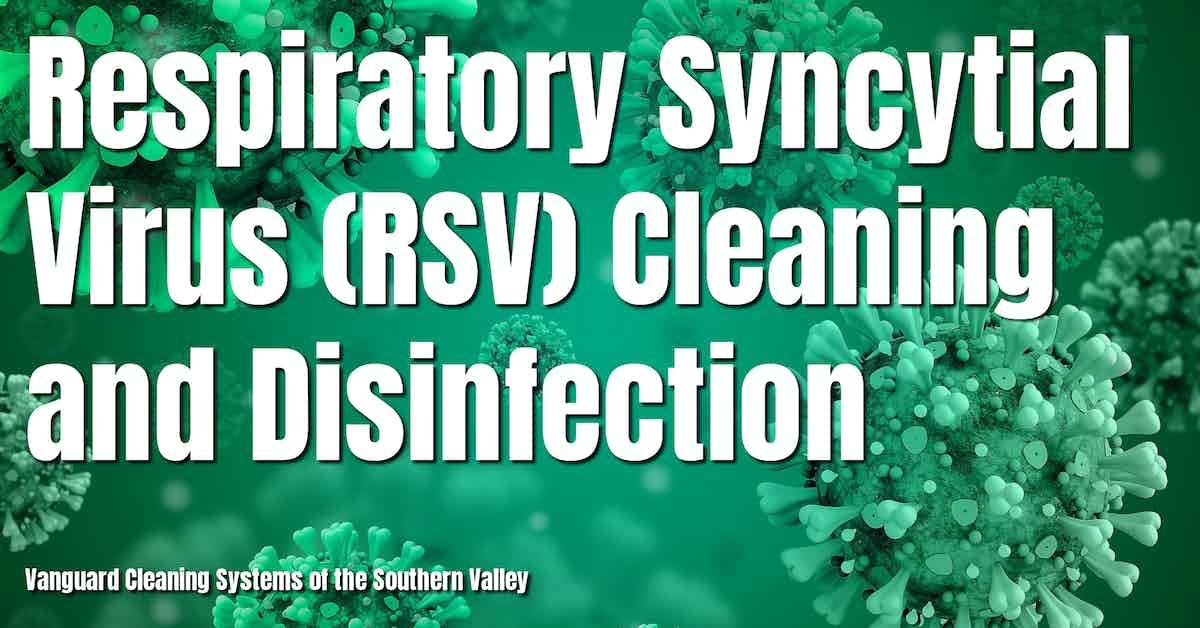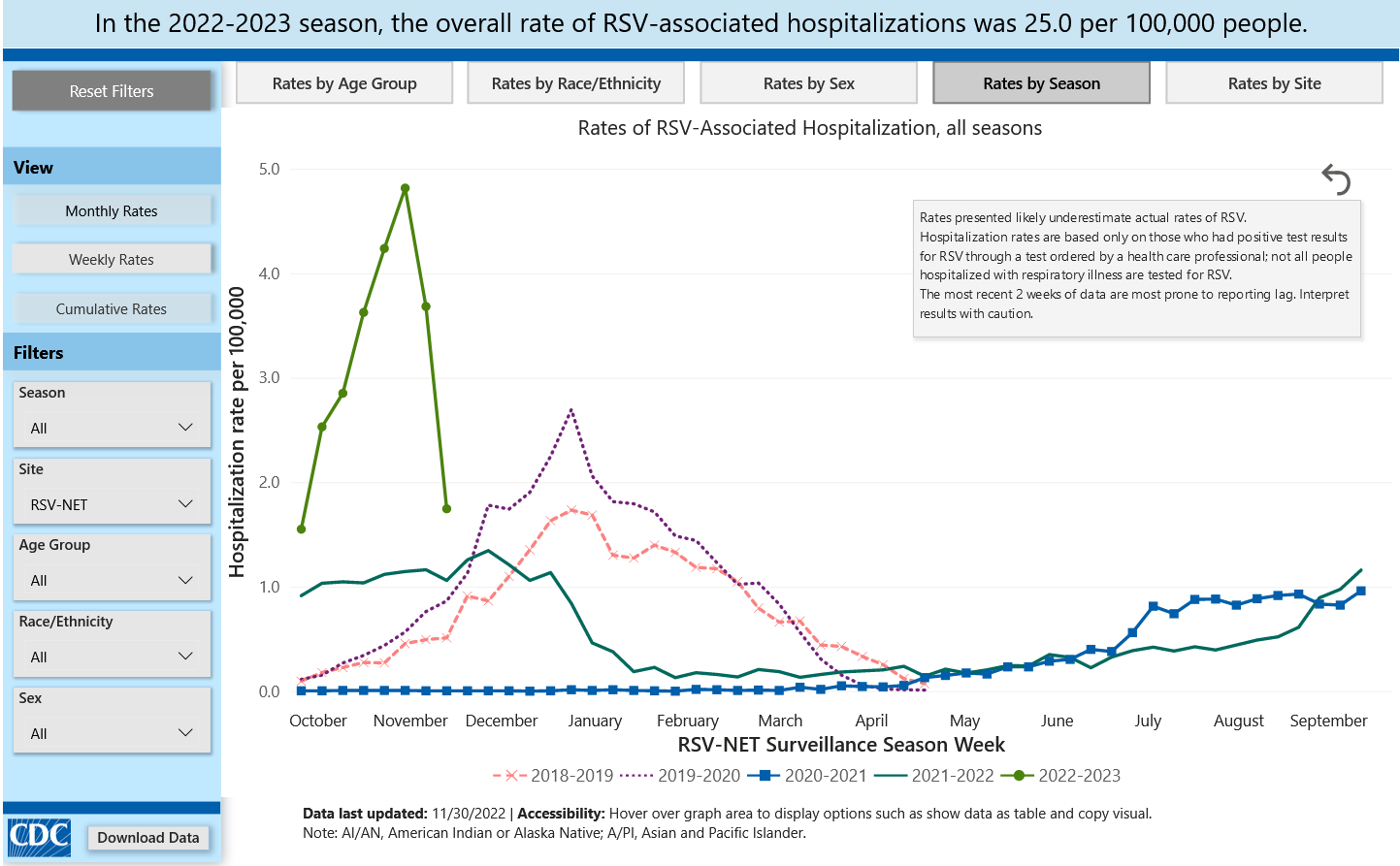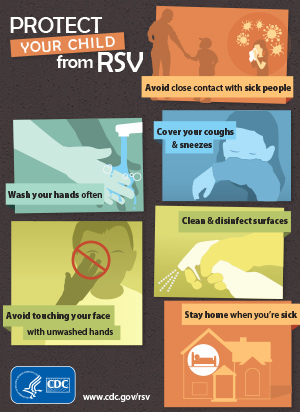A rise in RSV cases is causing concern among healthcare officials who recommend increasing cleaning and disinfection frequencies as a preventative measure, particularly in facilities servicing vulnerable demographics.

Respiratory Syncytial Virus (RSV) Outbreak
RSV is a common respiratory virus that often results in mild, cold-like symptoms; it is the leading cause of bronchiolitis and pneumonia for children younger than one year and is considered especially dangerous for infants and older adults.
According to the U.S. Centers for Disease Control and Prevention (CDC), each year in the United States, RSV leads to approximately:
- 2.1 million outpatient (non-hospitalization) visits among children younger than five.
- 58,000-80,000 hospitalizations among children younger than five years old.
- 60,000-120,000 hospitalizations among adults 65 years and older.
- 6,000-10,000 deaths among adults 65 years and older.
- 100–300 deaths in children younger than five years old.
Source:
A recent spike in reported infections has led the CDC to issue a public health alert.
CDC surveillance has shown an increase in RSV detections and RSV-associated emergency department visits and hospitalizations in multiple U.S. regions, with some regions nearing seasonal peak levels.
Clinicians and public health professionals should be aware of increases in respiratory viruses, including RSV.
RSV Symptoms and Transmission
RSV infections result in cold-like symptoms, most commonly:
- Fever.
- Sneezing.
- Coughing.
- Wheezing.
- A runny nose, and;
- A decreased appetite.
Additional symptoms for infants include:
- Decreased energy.
- Irritability, and;
- Trouble breathing.
RSV transmission routes are comparable to COVID--typically through the air as droplets or, less often, through direct or indirect contact with an infected host or contaminated surface.
RSV Prevention
- On average, RSV can survive on hard surfaces for several hours.
- Average infection times range between three to eight days and up to several weeks for immunocompromised patients.
- The virus can spread up to two days before symptoms appear.
Presently, there is no RSV vaccination--underscoring the need for increased preventative measures, particularly during abnormally high outbreaks.
According to the CDC;
Researchers are working to develop RSV vaccines, but none are available yet.
A drug called palivizumab (pah-lih-VIH-zu-mahb) is available to prevent severe RSV illness in certain infants and children who are at high risk for severe disease.
This could include, for example, infants born prematurely or with congenital (present from birth) heart disease or chronic lung disease.
The drug can help prevent serious RSV disease, but it cannot help cure or treat children already suffering from serious RSV disease, and it cannot prevent infection with RSV.
Since RSV is primarily transmitted as an airborne agent, increasing mechanical indoor airflow and filtration will help reduce infection rates.
Additionally, opening doors or windows to allow for natural air circulation and installing commercial-grade air cleaners can further reduce the spread of RSV.
The CDC recommends:
- Avoiding contact with others if you are sick.
- Washing your hands regularly with soap and water for at least 20 seconds several times per day, particularly if you are experiencing symptoms, and;
- Increasing cleaning and targeted disinfection frequencies.
When cleaning to prevent or combat RSV facility contamination:
- Clean all occupied facility spaces each day.
- Dry clean with microfiber cloths, brooms, and HEPA-filtered vacuums, then;
- Wet clean with commercial-grade soap-based detergent applied with microfiber.
- Disinfect commonly touched surfaces, including door plates, coffee pots, and vending machine buttons, with a diluted bleach solution or with a product on the U.S. Environmental Protection Agency's (EPA) List N or List G.
Takeaway
A concerning outbreak of RSV is underway.
Social distancing, hand hygiene, enhanced cleaning, and targeted disinfection strategies are the only available preventative measures.
Given the danger posed by RSV to vulnerable demographics, only trained custodial providers should be allowed to enter and service high-risk and contaminated facilities.
Increasing indoor air circulation and cleaning frequencies will positively impact occupant health and safety.
Onboarding and managing the requisite labor and material resources necessary to ensure the highest standards of cleanliness are achieved and maintained may prove cost-prohibitive for many organizations.
Outsourcing is a proven method for onboarding highly in-demand cleaning and disinfection services and experience for a fraction of the price of maintaining a similar service in-house.
If you would like more information regarding the effectiveness of high-performance infection prevention and control measures, or if you would like to schedule a free, no-obligation on-site assessment of your facility's custodial needs, contact us today for a free quote!
In Bakersfield, CA, call (661) 437-3253
In Fresno, CA, call (559) 206-1059
In Valencia, CA, or Santa Clarita, CA, call (661) 437-3253
In Palmdale, CA, or Lancaster, CA, call (661) 371-4756




You must be logged in to post a comment.